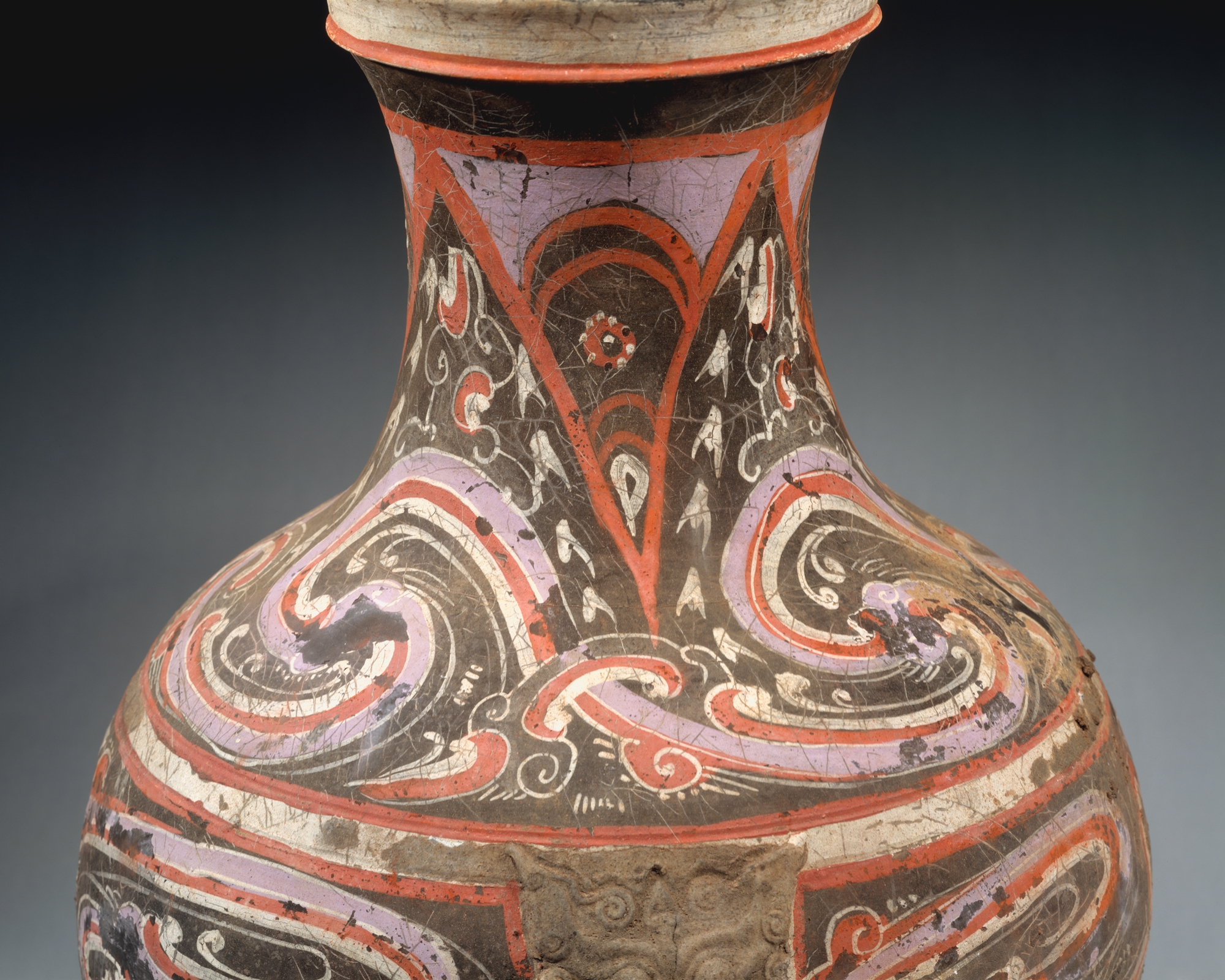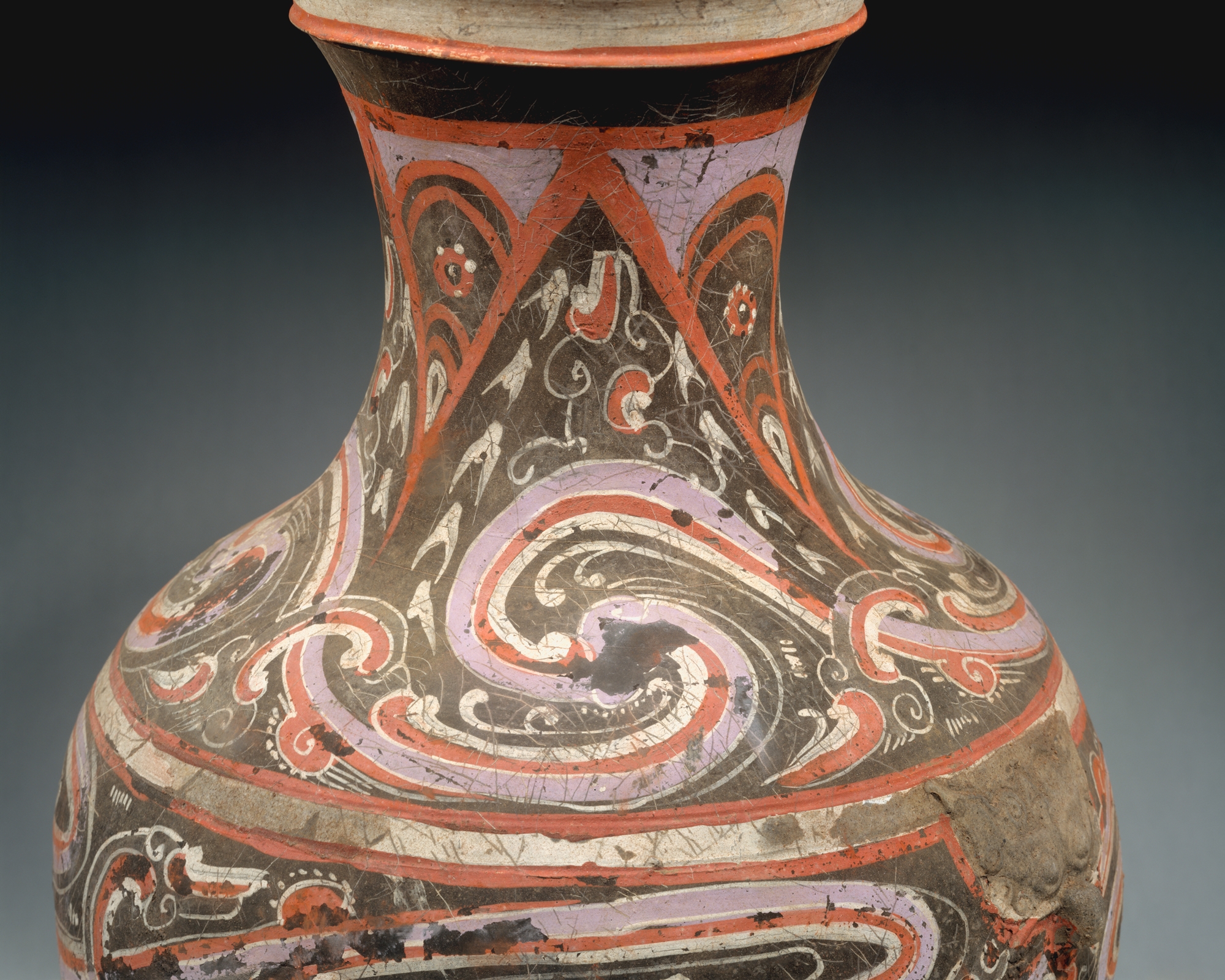Covered Jar (Hu)
Not on view
During the Warring States period (475–221 B.C.), jades, bronze, textiles, musical instruments, books and other luxuries were often placed in tombs to serve the needs of the deceased in the afterlife. In the early Han dynasty pottery models known as mingqi or "spirit goods" began to be produced as substitutes for more valuable possessions, and to provide figures of servants, entertainers, livestock, pets, and vessels and other necessities for the tomb. Made of low-fired earthenware and painted with chalky mineral pigments that flake off when handled, this covered jar is too porous to hold liquids. The swirling cloud-like designs covering the vessel are thought to represent celestial mists through which the deceased would travel to join the immortals.
Due to rights restrictions, this image cannot be enlarged, viewed at full screen, or downloaded.
This artwork is meant to be viewed from right to left. Scroll left to view more.




